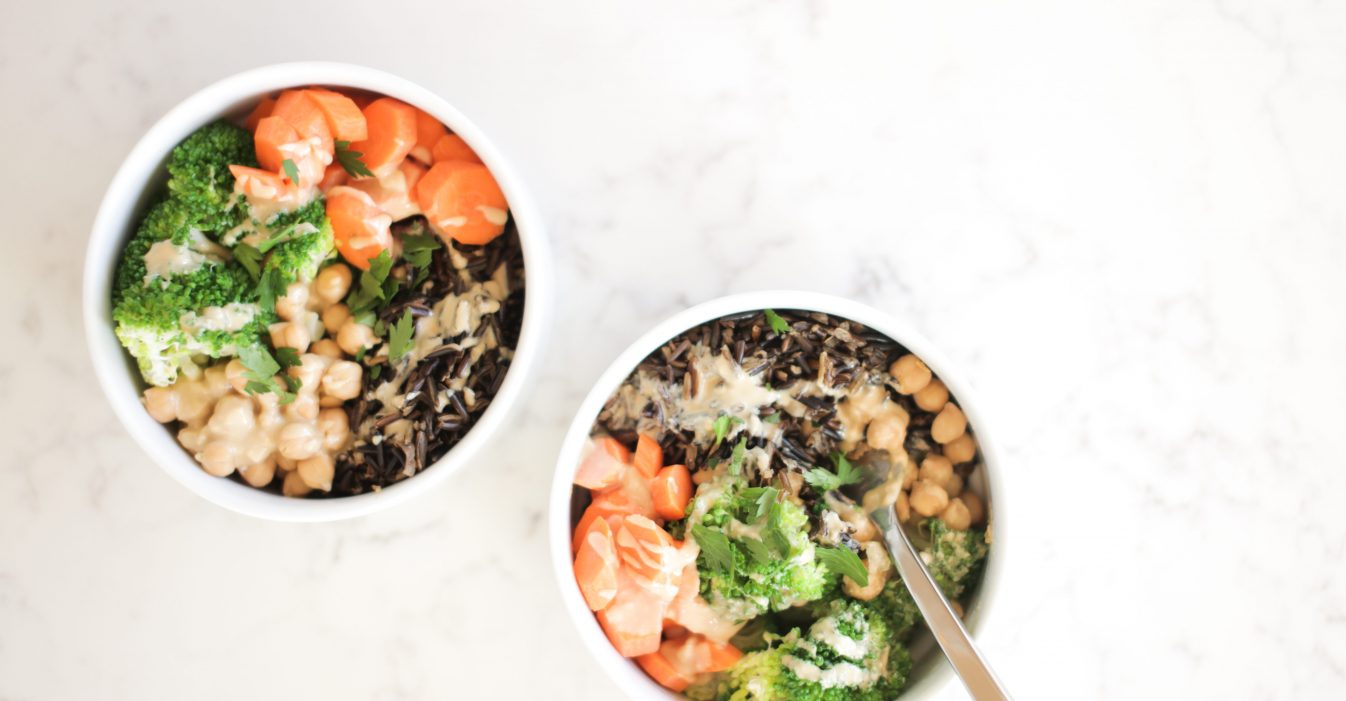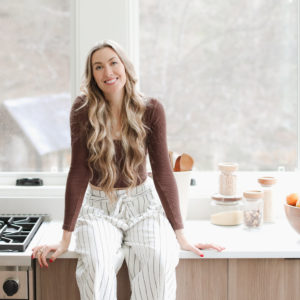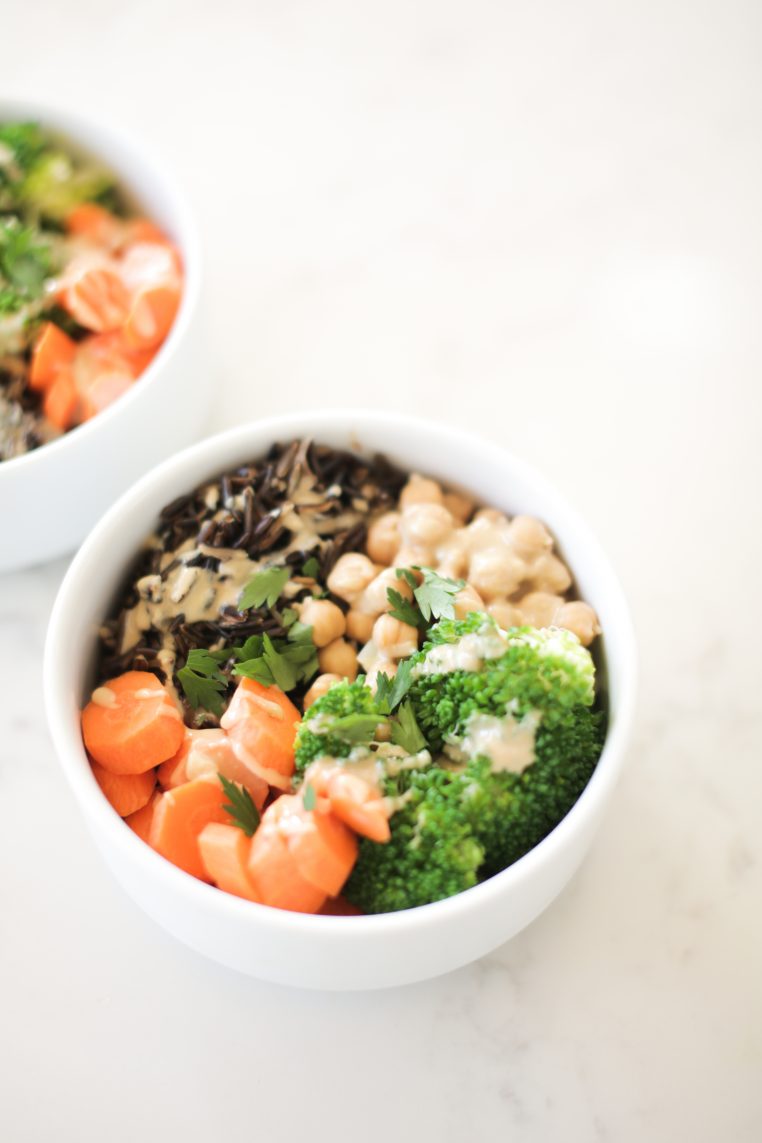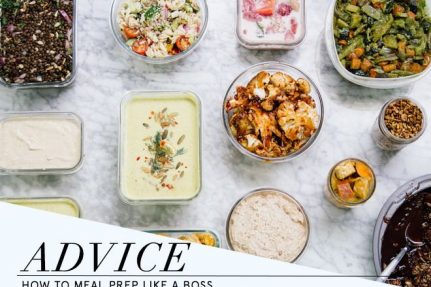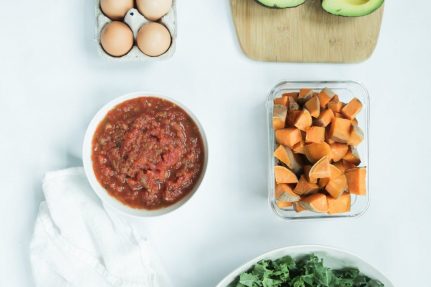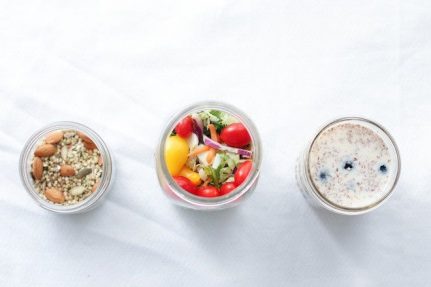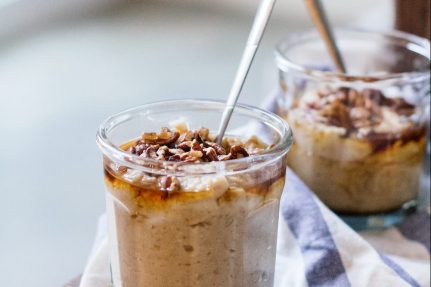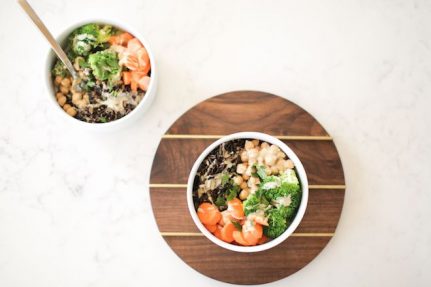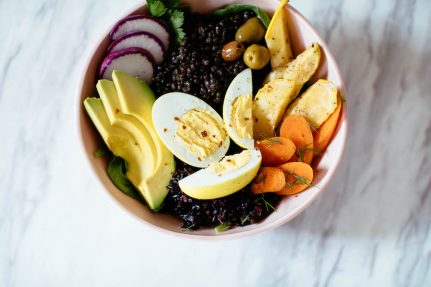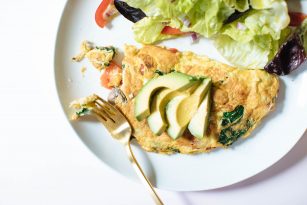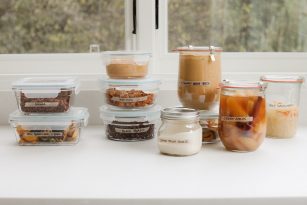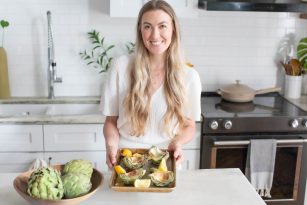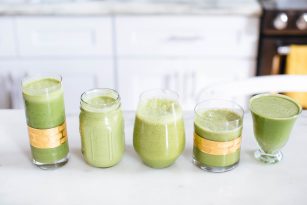Learn how to batch cook for the week using these handy tips from dietitian nutritionist McKel.
Batch cooking is a life saver.
Have you ever heard of Meal Prep Mondays, meal prep, batch cooking, or bulk cooking? You may not have a clue what I’m referring to, but I’m sharing my trusted tool for healthy eating with you today in the Batch Cooking 101 Guide.
I’ve been batch cooking or doing some form of meal prep for the entire week ever since I was a freshman in college. Back then, my busy schedule of jumping between classes, my internship, and work combined with maintaining a social life primed me for the future of a busy schedule. Undoubtedly, batch cooking helped me tremendously and still continues to be a lifesaver in reaching my health goals and saving time.
What is batch cooking?
Basically, batch cooking is preparing most or all of your meals and snacks for the entire week on just one day of the week. You simply make a date with your kitchen for about 1-2 hours one day every week and have some fun cooking! For me it’s Saturday right after I finish my grocery shopping haul in the morning or afternoon. No freezing is required for any of your batch cooking since you’ll be eating your meals throughout the week.
Devoting a good chunk of one day a week might sound like a big time investment, but bear with me. In an entire week you have 168 hours, so only one or two hours per week for cooking is not much time! If you’re currently coming home from work every night and cooking on the spot, it could easily add up to 30-60 minutes every evening. Add that up and that’s over 7 hours a week spent cooking! We all can use that extra five hours a week we’d save batch cooking to instead enjoy time with loved ones, play more, take walks, engage in our beloved hobbies, and decompress.
If you aren’t cooking at home for dinner, you may be going through a drive-through, picking up fast food, or dining out because you have nothing prepared once you come home. Again, batch cooking will save not only your health by avoiding all those questionable ingredients used by fast food establishments, but also will save you some serious money from eating out.
At first, you may feel a tad overwhelmed with all the foods you want to make for an entire week, so I suggest starting out with one meal that you find you’re most pressed for time or poses the most challenge for cooking. For example, most people I coach find they’re most pressed for time with dinner or breakfast, especially if you’re getting the kids and yourself ready for the day. Therefore, the first step is asking yourself, “What meal time is really difficult for me to cook?” or “What time of day am I most in a time crunch to eat something healthy?” Start with that meal and gradually build upon the days/weeks when you’re feeling more comfortable or jump right in full force! I promise you the more frequently you batch cook and meal prep, the better and more efficient you become at it. Before long, you’ll be a master meal prep machine.
So why batch cook?
- Save you time from cooking throughout the week.
- Keeps you on track with your health goals.
- This is especially important for those of you who have a specific health goal that’s high priority: weight loss, muscle gain, fitness/strength goals – this will help keep you on track!
- Takes the mental “burden/obligation” off your mind from thinking “What am I going to make for dinner ” or “I still have to cook”, etc.
- Consistency is key when making and achieving your health and wellness goals. And what’s more consistent than having your meal prepared and planned for you a week in advance?
- It’s a fun way to diversify your food and meal choices throughout the day and week.
Helpful tools for batch cooking:
- Airtight glass containers!
- Ziploc sandwich and snack-size bags
- Vitamix or high-speed blender
- Several large mixing bowls
- Fresh ingredients from the local farmers markets, grocery store, CSA’s, etc.
- Time and patience (especially if it’s your first time!)
- Music to dance and sing really loud to
- Friends or loved ones to join in (or do it solo like I do!)
- Sunlight (always makes it more enjoyable)
- And a mug of hot tea…
My kitchen typically looks like a bit of a disaster while batch cooking with veggies galore on the cutting board, soups on the stove, hummus in the blender, quinoa in the rice cooker, sweet potatoes and homemade granola in the oven, etc. But that’s fun, right?
Batch cooking is a bit of a therapeutic time for me. It’s a time when I can get in what my family and friends call “the zone”. I turn on some tunes and cook, blend, and bake as much as my little heart desires. You too will find your groove in the kitchen and start to develop your own go-to recipe and groove in batch cooking. Another reason why batch cooking rocks – everything you’re eating is home-made, therefore you get to choose what goes into your food and ultimately what’s going into that beautiful body of yours! To start off, here are some of my favorite ideas that I incorporate into my week. I like to call these items meal components because you’re basically building meals from these simple ingredients throughout the week.
The Staples
Breakfast
- Stripped Green Smoothies!
- Protein shakes/smoothies
- Oatmeal (rolled oats, steel cut oats, buckwheat, etc.)
- Hard boiled eggs
- Protein pancakes/waffles
- Sliced fruit in snack-size Ziploc bags
Lunch/Dinner
- Large tossed salad (hold the dressing for now to keep it from getting soggy)
- Massaged Kale Salad
- Homemade salad dressings
- Homemade marina sauce
- Carbohydrates: Brown/wild rice, quinoa, millet, sweet potatoes (baked)
- Animal proteins (if you choose and following the Nutrition Stripped Philosophy): chicken salad, egg salad, tuna salad, chicken breasts/strips (baked, grilled, boiled), etc.
- Vegetarian proteins: Lentil, chickpeas, black beans, navy beans, black eyed peas, tempeh, organic tofu,
- Soups: home made tomato, vegetable, chili, butternut squash, split pea, chicken, bone broth, etc.
- Dips: hummus, guacamole, baba ganoush dip, salsa, Classic Cashew Cheese, fruit butters and jams
- Nut butters: almond, walnut, cashew, sunflower seed, pumpkin seed, etc. (store bought with whole food ingredients or homemade)
Snacks
- Homemade trail mixes (i.e. raw, unsalted varieties of nuts/seeds, dried fruit, shredded coconut, etc.) Trust me, you’ll be saving yourself from eating fillers, preservatives, extra sodium, and fat that your body doesn’t need.
- Snack size bags of fresh cut veggies and fresh fruit
- Snack size bags of homemade granola, of your favorite gluten-free crackers
- Small Tupperware full of your homemade hummus, salsa, etc.
Finishing Touches
As you cook these foods, cook them NAKED or as simple as possible (i.e. no dressing, no oil, no sauces, limited seasonings, etc.). Then when meal time rolls around, you’ll simply re-heat on the skillet/oven/or even microwave. Also, at this time you’ll add on what I like to call your “toppers”. These are the sauces, dressings, dips, fresh seasonings, herbs, dressings, etc. This is where all the fun and variety happens. Let’s take a look at an example below using just 1 meal component from your staple batch cooking list with “toppers”.
Several ideas using Quinoa for dinner:
- Monday | Quinoa stir-fry. Warm quinoa in a skillet with “toppers” of reduced sodium tamari sauce (a.k.a. soy sauce), sliced veggies, scramble a few egg/egg whites, and top with crushed cashews or sesame seeds.
- Tuesday | Taco night. Use quinoa as a base in a corn tortilla taco with “toppers” of protein and veggies from BC list OR use quinoa as the base of a “burrito bowl”.
- Wednesday | Italian. Use quinoa with “toppers” of marina sauce with veggies and a protein from your BC list.
- Thursday | Simple side. Use quinoa as a side dish with “toppers” of veggies and protein from BC list.
- Friday | Breakfast for dinner. Warm quinoa with “toppers” of unsweetened almond milk, cinnamon, fresh fruit and nuts or seeds.

